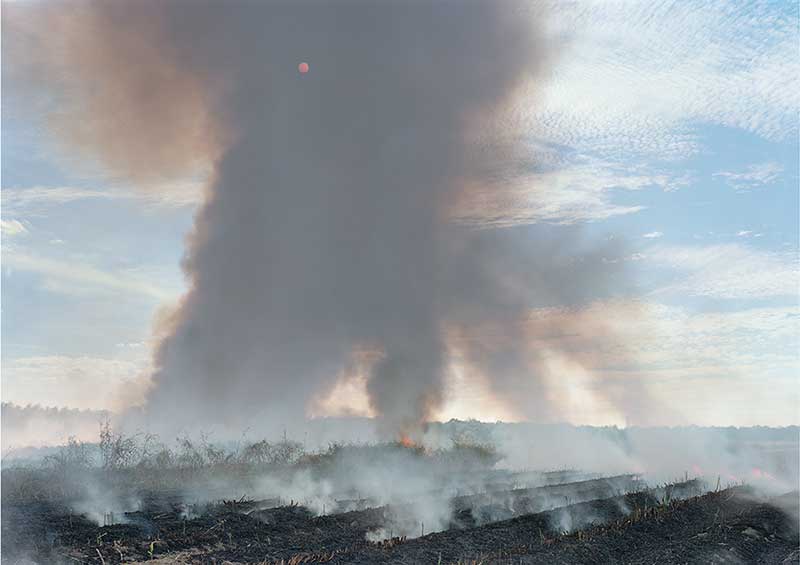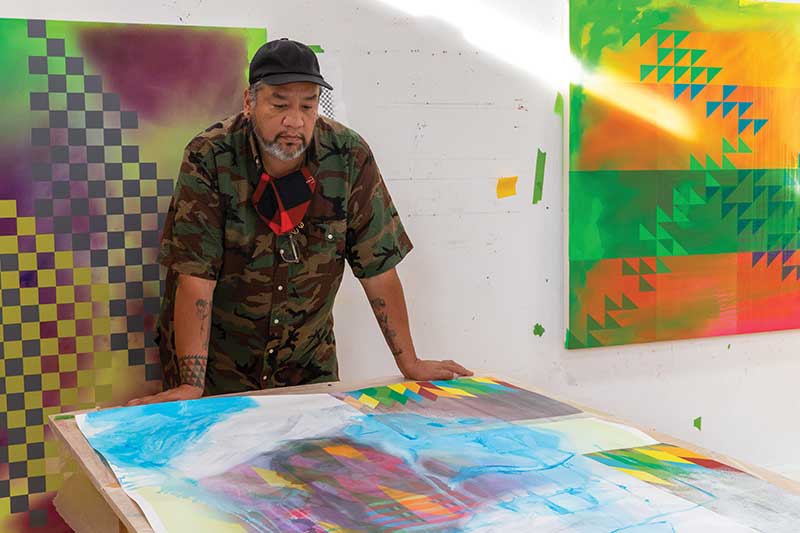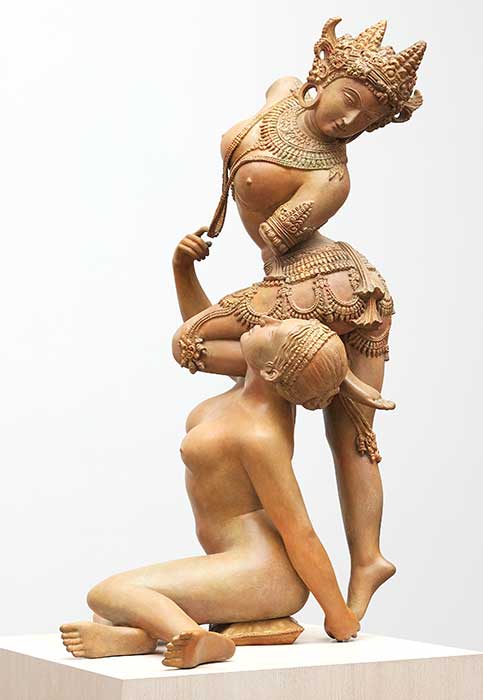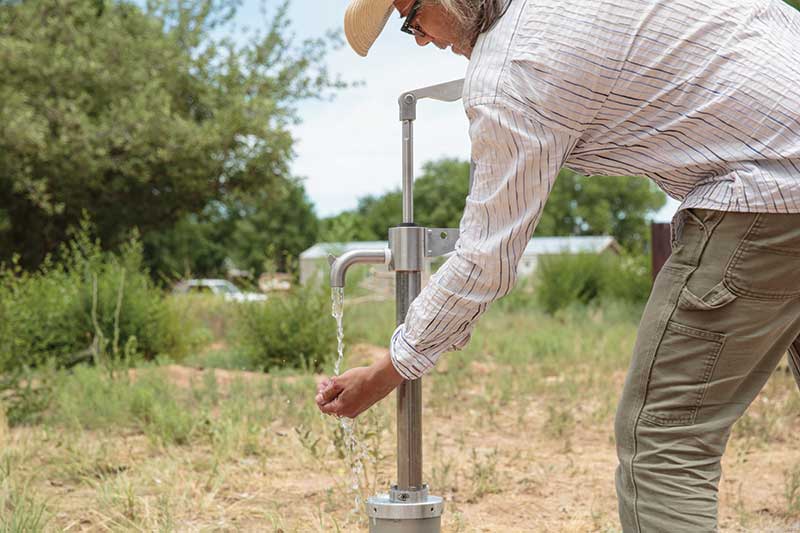Seeking Common Cause: The MacArthur Fellows Program at 40


By ANNA DOBROWOLSKI
Who are we? Where do we come from? Where are we going? These are just some of the existential questions tethered to creatives in any age, but this summer, as part of the upcoming multi-site exhibition Toward Common Cause: Art, Social Change and the MacArthur Fellows Program at 40, 29 artists add another question to the enduring list: Are we paying attention?
The exhibition materializes as we emerge from isolation (and general art deprivation) to once again encounter artists’ creative solutions to contemporary issues. Abigail Winograd, MacArthur Fellows Program 40th Anniversary Exhibition Curator, spoke with me about some of the collaborative efforts involved in the project.

CGN: 29 artists, 19 exhibition venues, and over a dozen research partners and community partners — in only three short years? Can you tell me more about Toward Common Cause and how the initiative unfolded?
Abigail Winograd: Three years ago the MacArthur Foundation invited me to propose an exhibition to celebrate the 40th anniversary of the Fellow’s program. The invitation included an open-ended proposal to present a theme. I made a selection of artists and proposed an exhibition that uses the “commons” as a thematic umbrella to look at four areas of inquiry: human society and communication, the natural environment, the built environment, and identity and representation. The show was a response to what felt like, at the end of 2017 and start of 2018, a moment in which we were, as a society, grappling with the realization that what we had thought was common ground or a common understanding, was being called into question.
CGN: One of the first exhibitions to open is Much Unseen is Also Here, which runs from June 3–August 29 at the Museum of Contemporary Photography (MoCP). Can you tell me more about the process, and some of the conversations you had with the artists An-My Lê and Shahzia Sikander and the curators?

AW: In the past couple of years, my conversations with artists An-My Lê and Shahzia Sikander involved thinking through their identities and representation as women of color in this moment in history. It developed into a conversation about their relationship to America and American-ness. That was happening in the midst of debates about monuments; the whole world, it seems, has been experiencing this moment of iconoclasm. After the murder of George Floyd, we see monuments literally being pulled off their pedestals because we’ve reached this moment of reckoning.
*
Both artists were already questioning the role of monuments through their own media and practice—An-My Lê through a 19th century photography apparatus, and Shahzia Sikander through mixed media (drawings, video installations, and patinated sculptures).
Since 2015, An-My Lê has been working on a large-scale photography project, The Silent General in which she explores the complicated relationships to landscape, war, and history. As part of her project, she documents the decommissioning of the statues of General Robert E. Lee and General P.G.T. Beauregard Monuments (2017) from their established locations to the Homeland Security Storage in New Orleans, where they were ultimately withdrawn.
Shahzia Sikander was interested in monuments from another angle. In 2017 she served on the Mayoral Advisory Commission on City Art, Monuments and Markers in New York City, which exposed her to ongoing discussions and competing public opinions surrounding the role of monuments. This culminated in an anti-monument, such as her Promiscuous Intimacies (2020 patinated bronze sculpture) depicting Greco-Roman Venus and the Indian Devata. An anti-monument cross-examines the social tenets underpinning monuments: its historical and classical implications, material structure; the power structures they inherently reveal along with the histories they conceal. Bringing these two bodies of work together into MoCP’s space crescendos into a duet of artistic practices that interrogate how –and whose—history is portrayed.
When Winograd conceived the idea three years ago, she could not divine that the project would coincide with a pandemic. If anything, the work by the MacArthur fellows gained another level of urgency. She felt deeply grateful to forge relationships with participating artists who were already using their art as a platform to confront realities and injustices in the world. “In this fraught moment, working with this cohort of artists and spaces is an unimaginable privilege. It’s been all a very humbling experience,” she says. “It’s also been special for me to work on one of the largest exhibitions I’ve ever done in my hometown. It really took a village.” Chicago was the natural choice for the exhibition, not least because it is the home of the MacArthur headquarters, but also because of its wealth of art schools, ethnic diversity, and working-class roots.

CGN: What is Chicago’s role in this project? Does the initiative underscore the city as an exhibition space?
AW: From the beginning, what we hoped to do was try to make the art available to as broad an audience as possible, which means lowering barriers of access. We thought about where museums and cultural resources are located and how we can integrate alternative venues to diffuse art across the city.
We are collaborating with the Chicago Housing Authority (CHA) for one of the exhibitions. This is the first time the CHA has participated in a contemporary art exhibition. After the last year, we all need more art in our lives. The CHA is another chance to work with organizations that don’t normally participate in these projects.
*
Due to the number and breadth of the exhibitions distributed across the city, it is impossible to look forward to just one. The fellows in the initiative – such as Jeffrey Gibson, Iñigo Manglano-Ovalle, Kara Walker, and Kerry James Marshall, to name a few – field a spectrum of social, environmental, and political issues in their practice. Toward Common Cause exposes where we are left vulnerable as a society and allows us to reflect and take the necessary steps to move forward.
Are we paying attention? If so, how can we unearth common ground?
For more information visit TowardCommonCause.org






